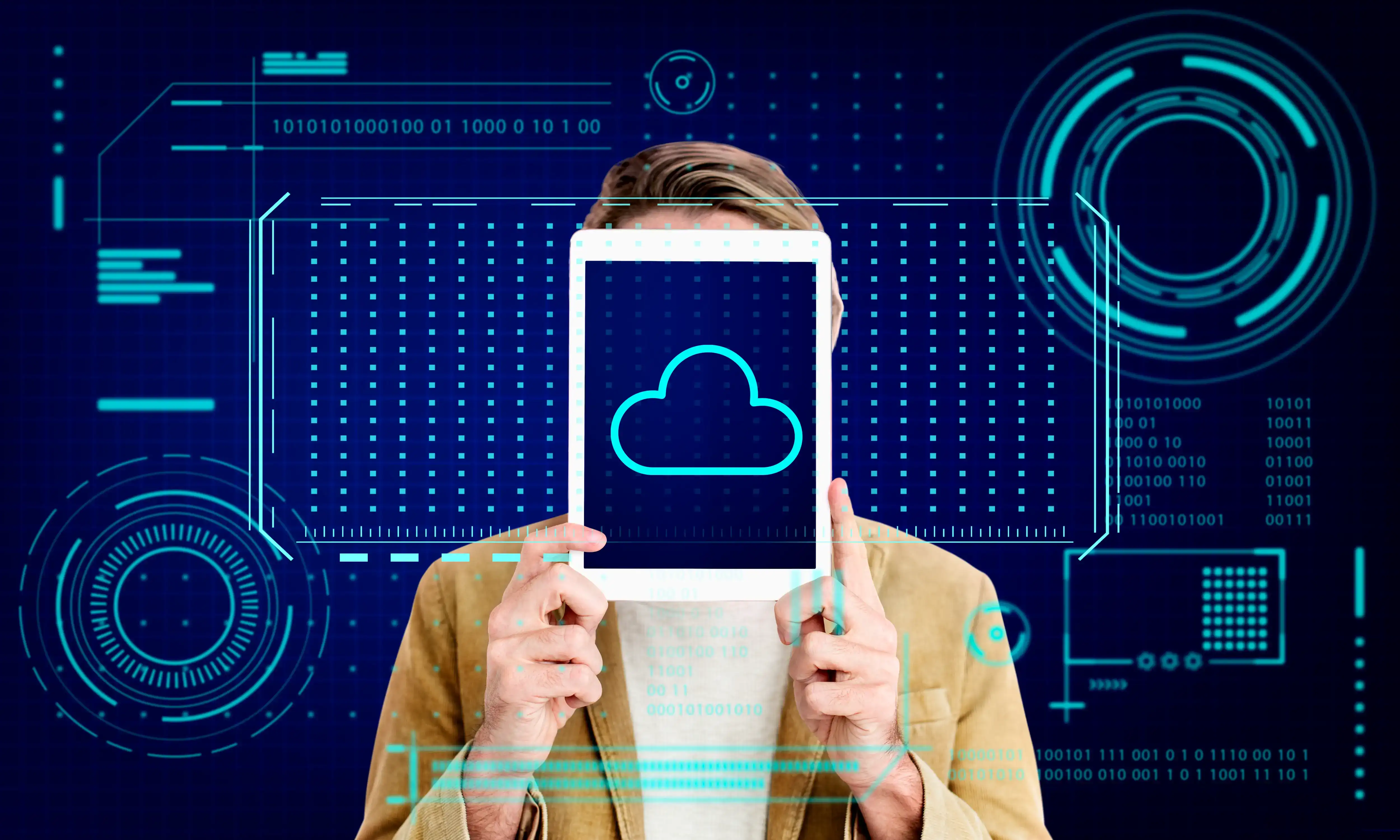AI in Education: Ethical Implications
Emily Willis

Photo: AI in Education: Ethical Implications
The integration of Artificial Intelligence (AI) into education is rapidly transforming how we learn, teach, and administer schools. From personalized learning platforms to automated grading systems, AI offers exciting possibilities to enhance educational outcomes and streamline processes. However, like any powerful technology, AI in education comes with its own set of ethical implications that we, as a society, need to understand and address thoughtfully. This article will explore these crucial ethical considerations, offering insights and practical steps to ensure AI truly serves the best interests of students and educators.
The AI Revolution in Classrooms: A Double-Edged Sword
AI in education isn't just a futuristic concept; it's already here. Think about adaptive learning platforms that adjust to a student's pace and style, or AI-powered tools that help teachers with administrative tasks, freeing them to focus more on direct student interaction. These innovations promise to make learning more engaging and accessible, even for students in remote areas or those with disabilities.
However, this technological leap also brings forth significant ethical challenges. The core idea behind ethical AI in education is to design, use, and manage these tools in a way that prioritizes people – focusing on fairness, transparency, and the well-being of everyone involved. It's about ensuring AI helps rather than harms the learning experience.
Navigating Key Ethical Implications of AI in Education
As AI becomes more ingrained in our educational systems, several critical ethical areas demand our attention.
Data Privacy and Security: Protecting Our Students' Digital Footprints
One of the most pressing concerns in AI in education is the vast amount of student data collected and analyzed by these systems. This can include sensitive information like academic records, behavioral patterns, online activities, and even biometric data. The question then becomes: How is this data stored, who has access to it, and how is it used?
- The Risk of Data Breaches: Educational institutions hold a treasure trove of private information. If not managed properly, AI applications demanding access to this data increase the risk of data breaches. For example, a data breach at an online exam proctoring service reportedly exposed user records for hundreds of thousands of students.
- Constant Surveillance and Trust: The continuous monitoring enabled by some AI tools can make students feel less likely to speak freely and erode their trust in the school environment.
- Accidental Data Entry: Educators, in an effort to improve personalized learning plans, might accidentally input identifiable student data into AI models, which can then be used for machine learning and even expose sensitive information if the tool suffers a breach.
Practical Steps for Data Privacy:
- Prioritize Informed Consent and Transparency: Schools must clearly explain to students and parents what data is being collected, how it will be stored, and for what purposes it will be used.
- Establish Strict Data Protection Protocols: Adhering to privacy laws and implementing robust policies that define how student data is collected, stored, and used is crucial. These policies should align with regulations like FERPA (Family Educational Rights and Privacy Act) in the US and similar state-specific rules.
- Limit Data Collection: Adopt a "minimum necessary data" approach, collecting only the information required to achieve educational outcomes.
- Partner with Trusted Vendors: Work with technology providers who demonstrate a strong commitment to data privacy and security, adhering to industry certifications.
- Educate Staff and Students: Provide training on responsible AI use, emphasizing what data should not be inputted into AI models, especially personally identifiable information (PII).
Algorithmic Bias and Fairness: Ensuring AI Works for Everyone
AI systems learn from the data they are fed. If this training data contains biases or doesn't represent a wide range of perspectives, the AI's outcomes can be unfair or skewed. This is known as algorithmic bias, and it's a significant ethical challenge in education.
- Perpetuating Inequalities: Bias in AI can manifest in various ways, such as grading systems that unintentionally favor students from specific backgrounds, or admissions decisions that exclude certain groups. For instance, AI admissions models have been shown to favor wealthier students with access to academic resources, exacerbating socioeconomic divides.
- Impact on Diverse Learners: Biased algorithms might misinterpret the work of non-native English speakers, falsely flagging it as AI-generated, leading to accusations of cheating. Similarly, facial recognition AI may not recognize certain racial groups as accurately, potentially leading to unfair outcomes.
- The Digital Divide: While AI can enhance accessibility, it can also exacerbate existing disparities if not all students have equal access to the necessary technology and infrastructure for AI-based education.
Ensuring Fairness in AI Education:
- Diversify Training Data: Developers and educators must prioritize using representative and varied training data to reduce bias in AI algorithms.
- Implement Fairness Measures and Audits: Regularly audit AI systems to detect and address prejudices, ensuring equitable access and outcomes for all students.
- Promote Inclusivity: Educators should ensure AI tools are used in ways that promote inclusivity rather than reinforcing inequities.
- Develop AI Literacy: Teach students to critically evaluate AI-generated content and understand the potential biases it might contain.
The Human Element: Teacher Roles and Student Well-being
While AI offers efficiency and personalized learning, there are concerns about its impact on the crucial human interaction between teachers and students, and on student well-being.
- Maintaining Human Connection: Over-reliance on AI could erode the teacher-student relationship and the social skills students develop in the classroom. Teachers play an irreplaceable role as mentors, facilitators, and role models.
- Teacher Autonomy and Burnout: AI can automate administrative tasks, potentially reducing teacher workload and burnout. However, if decisions about teaching are delegated to automated platforms, teachers might feel stripped of their professional autonomy.
- Student Emotional Well-being: The growing use of AI can also impact students' emotional well-being, potentially generating pressure, anxiety, or disconnection if not implemented with a critical and human pedagogical approach.
Balancing AI with Human Interaction:
- Empower Teachers: Provide educators with training on integrating AI responsibly, focusing on how AI can augment their capabilities rather than replace them.
- Prioritize Human-Centric Approaches: Ensure AI tools enhance personalized learning without compromising human engagement or critical thinking skills. AI should support, not diminish, the human element in education.
- Foster Critical Thinking: Encourage students to critically evaluate AI-generated content and understand its limitations.
- Address Emotional Impact: Integrate AI within a "pedagogy of care," where adaptive tools provide support without creating undue pressure or anxiety.
Accountability and Transparency: Knowing How AI Works
Many AI systems operate as "black boxes," meaning their decision-making processes are complex and difficult to understand or question. This lack of transparency raises significant concerns about accountability.
- Understanding AI Decisions: Students, parents, and educators need to understand how AI tools arrive at their conclusions, whether it's a grade, an admission decision, or a personalized learning recommendation.
- Assigning Responsibility: When AI systems make mistakes or lead to unfair outcomes, who is accountable? Without transparency, it's hard to trace and address issues.
- Building Trust: Transparency is critical for building trust in AI systems. Clear communication about data practices and how AI operates fosters confidence among all stakeholders.
Promoting Transparency and Accountability:
- Clear Communication: Provide straightforward explanations of how AI algorithms analyze data and make decisions.
- Comprehensive Documentation: Maintain documentation of AI models, datasets, and decision-making processes to enable stakeholders to trace and address any issues.
- Ethical Frameworks and Guidelines: Develop robust ethical guidelines and regulations that prioritize transparency and accountability for AI in education.
- Stakeholder Involvement: Involve parents, students, and educators in creating AI guidelines to ensure they are comprehensive and address community concerns.
Preparing for the Future: AI Literacy and Ethical Frameworks
To navigate the evolving landscape of AI in education, it's essential to equip everyone with the knowledge and skills to engage responsibly with these technologies. This includes developing AI literacy and establishing strong ethical frameworks.
- AI Literacy for All: Understanding how AI works, its limitations, implications, and ethical considerations is crucial. This should be integrated into the curriculum from elementary school onward, using relatable examples to discuss data privacy and algorithmic bias.
- Developing Robust Ethical Guidelines: Strong policy frameworks are needed to ensure AI technology is appropriately incorporated into educational settings. This involves collaboration among educators, policymakers, researchers, and developers to establish ethical principles, norms, and legislation.
- Continuous Assessment: Regularly evaluate AI tools for functionality and their impact on student learning and equity. Feedback from students and teachers is invaluable.
Practical Steps for a Responsible AI Future in Education
Here’s a summary of actionable insights for schools, parents, and students to ensure AI in education is used ethically and effectively:
- For Schools and Educators:
- Develop Clear AI Policies: Establish guidelines for ethical AI use in classrooms, covering data privacy, academic integrity, and appropriate AI tool usage [7, 2
Latest ✨
View AllUncover the bond market's true nature. Is it a safe haven? Learn its benefits, inherent risks, and how to confidently integrate bonds into your portfolio.
Emily Willis
Discover the innovation economy: how new ideas, tech, and business models drive global growth and define future success.
Emily Willis
sustainable travel and highlights three destinations - Costa Rica, Iceland, and New Zealand - where eco-conscious adventures are prioritized. It describes the eco-friendly activities and responsible tourism practices in each destination, as well as providing additional tips for sustainable travel such as packing light, choosing eco-friendly transportation, and embracing local cuisine.
Emily Willis
Blockchain technology, initially associated with cryptocurrencies, has expanded to have diverse applications across industries. It is a decentralized digital ledger that ensures secure, transparent, and immutable transactions. Beyond cryptocurrency, blockchain has been applied to supply chain management, healthcare, voting systems, smart contracts, digital identity verification, real estate transactions, and supply chain finance. Future trends include enhancing interoperability, addressing scalability issues, and exploring regulatory frameworks. Overall, blockchain technology has the potential to revolutionize various sectors by enhancing efficiency, security, and trust in operations.
Emily Willis
Business
View All
June 8, 2025
Top Sales Techniques to MasterTransform your sales approach. Discover top modern sales techniques, including consultative selling, to connect, persuade, and build lasting customer relationsh...
Emily Willis

June 8, 2025
Scale Your Business SmartlyScale your business smartly for sustainable growth. Learn strategies to increase revenue efficiently, avoid common pitfalls, and build a robust enterprise.
Emily Willis

June 9, 2025
Budgeting Tips for Business ExpensesMaster your business finances! Discover essential budgeting tips to control expenses, improve cash flow, and drive sustainable growth for your enterprise.
Emily Willis
Economy
View AllIn today's rapidly changing economic landscape, innovation and resilience are more important than ever. Innovation drives progress and competitiveness by creating new ideas and solutions to meet market needs. Resilience helps businesses withstand shocks and bounce back from setbacks by planning strategically and diversifying resources.
Read MoreIs globalization reversing? Unpack key economic trends, trade protectionism, and the shift to "slowbalization" shaping our interconnected world.
Read MoreDive into the economics of monopolies. Learn how these single-rule markets form, their characteristics, and their impact on prices, quality, and growth.
Read MoreEntertainment
View All
August 4, 2024
Profiles of Famous Artists Who Inspire the Younger Generationthe inspirational aspects of famous artists such as Vincent van Gogh, Frida Kahlo, Pablo Picasso, Banksy, Yayoi Kusama, Jean-Michel Basquiat, Georgia O'Keeffe, Andy Warhol, Kehinde Wiley, and Ai Weiwei. It highlights their perseverance, innovation, authenticity, social commentary, mental health advocacy, and representation, among other qualities, and how these aspects continue to inspire young artists to pursue their creative dreams.
Emily Willis

August 4, 2024
The Evolution of Streaming Services Such as Netflix, Disney+, Hulu, and the Implications for the Traditional Entertainment IndustryThe rise of streaming services has revolutionized the entertainment industry, offering on-demand access to a vast library of content through internet-connected devices. Platforms like Netflix, Disney+, and Hulu have diversified their content libraries, reshaped consumer behavior, and challenged traditional distribution models. Technological advancements have enhanced streaming experiences, while economic and cultural implications have led to global market expansion and increased investment in original content production. The future of the streaming industry will be shaped by competition, convergence of media and technology, and the need for adaptation to changing consumer preferences. Embracing digital transformation and strategic partnerships will be crucial for stakeholders in navigating the evolving landscape of modern entertainment.
Emily Willis

August 4, 2024
The Evolution of Digital Distribution in the Music Industry: Challenges and OpportunitiesThe music industry has been transformed by digital distribution, which allows quick access to a vast catalog of music through streaming services and online stores.
Emily Willis
Health
View AllPreventive healthcare focuses on strategies to prevent disease and maintain well-being, rather than just treating illnesses after they arise. It helps identify risk factors early on, allowing for interventions that can prevent or delay the onset of chronic diseases.
Emily Willis
The healthcare landscape is being transformed by technological advancements, with telehealth and remote care providing convenient access to healthcare services. Artificial intelligence is revolutionizing diagnostics, personalized medicine, and drug discovery. Wearable technology is empowering patients to take control of their health.
Emily Willis
The focus of nutrition advice is shifting towards personalized nutrition, taking into account individual genetic makeup, lifestyle, and health goals to create a customized eating plan. This approach can lead to improved health outcomes, enhanced nutrient absorption, increased motivation, and targeted support for specific health concerns.
Emily Willis
Trending 🔥
View All
1
2
3
4
5
7
8
9
10
Sports
View AllAugust 5, 2024
Celebrating Sports Legends: Honoring Iconic Figures and Their Enduring Impact
Read MoreAugust 4, 2024
Benefits of Cross Training for Athletes: Improves Performance and Prevents Injuries
Read MoreTechnology
View All
August 5, 2024
Tips for Implementing Cloud Computing Safely and Efficiently
Cloud computing is essential for modern businesses, offering cost savings, scalability, and improved collaboration. Implementing cloud computing requires careful planning to ensure safety and efficiency. Tips for safe and efficient implementation include conducting a needs assessment, choosing the right cloud service model, prioritizing security, planning for data migration, optimizing costs, training your team, implementing backup and recovery solutions, monitoring performance, planning for scalability, and staying updated with industry trends.

August 4, 2024
Role of Cloud Computing Technology in Modern Business
Cloud computing technology has become essential for modern businesses, offering cost efficiency, scalability, and flexibility. It enables streamlined processes, enhanced productivity, and improved collaboration among employees. Cloud computing also ensures data security, disaster recovery, and business continuity. By migrating to the cloud, businesses can streamline IT operations, enhance customer experiences, access advanced technologies, and reach a global audience. Real-world applications of cloud computing include e-commerce, healthcare, financial services, manufacturing, and education.

August 5, 2024
The Most Common Types of Cybersecurity Threats
In today's digital age, cybersecurity threats are increasing in sophistication and frequency. It is important for businesses and individuals to be aware of these threats in order to protect sensitive information and maintain privacy. Understanding common types of cybersecurity threats is the first step in safeguarding against them.

August 4, 2024
Data Security in the Digital Era: Challenges and Solutions
importance of data security in the digital age, highlighting challenges such as cyberattacks, human error, weak passwords, and outdated systems. It also provides solutions to enhance data security, including encryption, strong password policies, multi-factor authentication, regular software updates, employee training, access controls, data backup, incident response plans, security audits, and advanced security technologies. These measures are essential for protecting sensitive information and preventing unauthorized access and breaches.




















